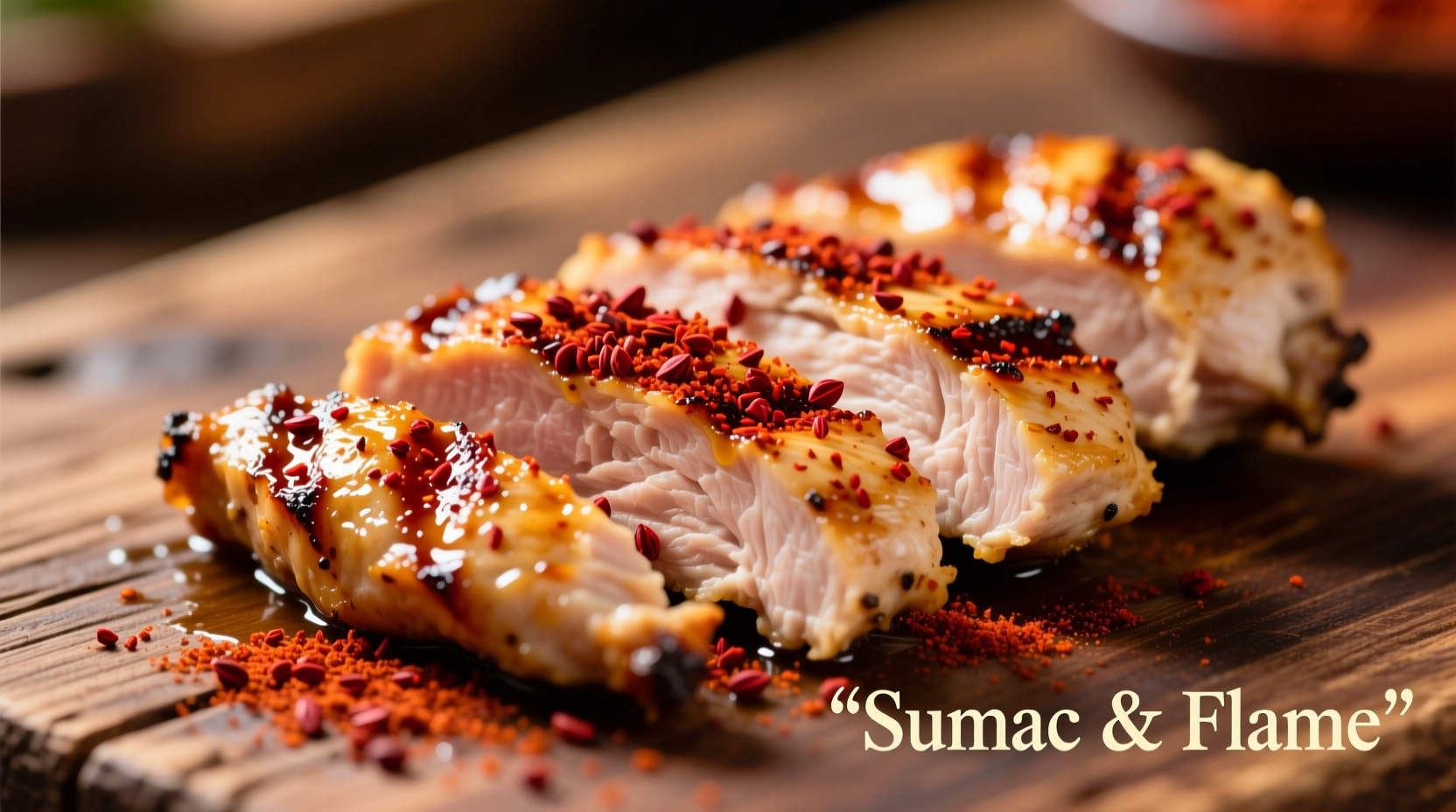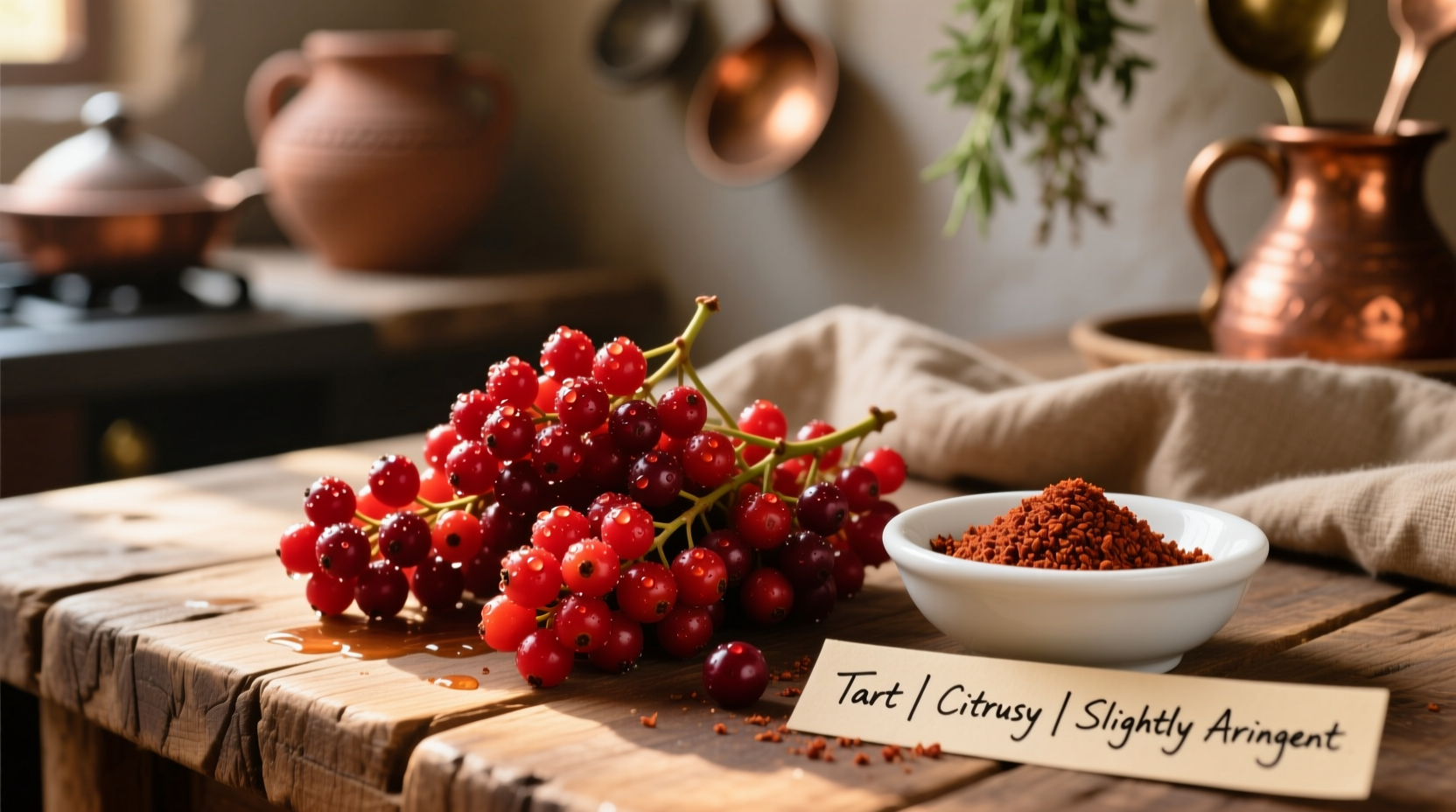If you've ever wondered what does sumac taste like, you're in for a flavorful revelation. This ancient spice provides a bright, tangy profile that's become essential in Middle Eastern and Mediterranean cooking. Unlike single-note acids, sumac delivers a sophisticated sourness with subtle berry-like hints and a gentle astringency that balances perfectly in both savory and sweet applications.
The Complete Flavor Profile of Sumac
Sumac's taste can best be described as a harmonious blend of citrus and earth. When you first experience sumac, you'll notice an immediate tanginess similar to dried lemon zest, but with less sharp acidity and more rounded complexity. The flavor unfolds in layers: initial tartness gives way to subtle floral notes, followed by a mild earthiness that anchors the experience.
Professional chefs like Antonio Rodriguez appreciate sumac's unique chemical composition. "Sumac contains malic and citric acids, but in different proportions than citrus fruits," explains Rodriguez. "This creates a more mellow sourness that works beautifully in dishes where you want acidity without the sharp bite of vinegar or lemon juice."
| Flavor Component | Sumac | Lemon | Vinegar |
|---|---|---|---|
| Primary Taste | Tart with earthy notes | Sharp citrus | Strong acidity |
| pH Level | Moderate (4.5-5.0) | Highly acidic (2.0-2.6) | Very acidic (2.4-3.4) |
| Aftertaste | Subtle berry notes | Clean citrus finish | Pungent, lingering |
| Heat Stability | Retains flavor when cooked | Loses brightness when heated | Flavor changes with heat |
How Sumac Compares to Other Acidic Ingredients
Understanding what does sumac taste like in cooking requires comparing it to more familiar acidic ingredients. While lemon provides a bright, singular citrus note, sumac offers a more complex sour profile with underlying earthiness. Unlike vinegar's sharp, one-dimensional acidity, sumac's tartness is rounded and multifaceted.
Food historians note that sumac has been used as a souring agent since ancient times, long before lemons became widely available in many regions. The USDA National Nutrient Database confirms that sumac contains approximately 12% citric acid by weight, compared to lemon's 5-6%, but with additional compounds that create its distinctive flavor profile.

Historical Context of Sumac Flavor
Sumac's culinary journey reveals why its taste profile became so valued across cultures. Historical records from the University of California's Department of Food Science show sumac was a primary souring agent in Middle Eastern cuisine long before citrus fruits spread through trade routes.
During the medieval period, sumac traveled along spice routes from its native Mediterranean regions to Persia and beyond. Culinary anthropologists from the Oxford Symposium on Food and Cookery document how sumac's unique flavor made it indispensable in Ottoman cuisine, where it balanced rich meats and complemented delicate rice dishes.
Practical Applications: Where Sumac Shines
Knowing how would you describe sumac taste helps determine its best culinary uses. Sumac works exceptionally well in these applications:
- Meat rubs: Its gentle acidity tenderizes without overpowering
- Salad dressings: Creates balanced vinaigrettes with less sharpness than vinegar
- Rice and grain dishes: Adds brightness to pilafs and couscous
- Vegetable preparations: Enhances roasted or grilled vegetables
- Dips and spreads: Complements tahini and yogurt-based sauces
Chef Rodriguez emphasizes proper usage: "For the best sumac taste characteristics, sprinkle it toward the end of cooking or as a finishing touch. High heat diminishes its delicate floral notes, so add it after removing dishes from heat for maximum flavor impact."
Context Boundaries: When Sumac Might Not Work
While versatile, sumac has specific limitations. Its flavor profile doesn't complement:
- Strongly sweet desserts (where citrus works better)
- Dishes requiring sharp, clean acidity (like ceviche)
- Recipes needing liquid acid (sumac is dry)
- Western-style barbecue sauces (overpowers smoked flavors)
Understanding these boundaries helps home cooks maximize sumac's potential. The American Spice Trade Association notes that sumac's flavor compounds are most stable between 60-140°F (15-60°C), making it ideal for room-temperature applications like fattoush salad.
Maximizing Sumac's Flavor in Your Kitchen
To experience authentic sumac seasoning flavor notes, follow these professional techniques:
- Storage: Keep in an airtight container away from light to preserve volatile flavor compounds
- Activation: Lightly toast sumac berries before grinding for deeper flavor (but avoid burning)
- Pairing: Combine with garlic, cumin, and coriander for authentic Middle Eastern profiles
- Ratio: Start with 1/2 teaspoon per serving and adjust to taste
For those exploring what dishes does sumac work well with, try it on grilled chicken, in hummus, or sprinkled over avocado toast. Its unique flavor bridges the gap between sour and earthy, creating dishes with remarkable depth.
Common Misconceptions About Sumac's Taste
Many home cooks wonder does sumac taste like lemon—while both provide acidity, sumac offers a more complex profile with earthy undertones lemon lacks. Another misconception is that sumac tastes bitter; properly processed culinary sumac (from Rhus coriaria) has no bitterness when used correctly.
The National Center for Home Food Preservation confirms that sumac's flavor remains stable for 1-2 years when stored properly, unlike citrus juices which degrade quickly. This shelf stability contributed to its historical importance as a souring agent before refrigeration.











 浙公网安备
33010002000092号
浙公网安备
33010002000092号 浙B2-20120091-4
浙B2-20120091-4